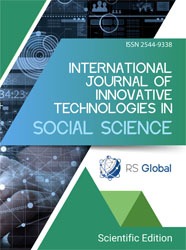STUDY ON THE RITUAL ARCHITECTURE OF LUOYANG CITY IN HAN AND WEI DYNASTIES
Abstract
The author of this article reviews the architectural style of Luoyang City during the Han and Wei dynasties by studying historical data, analyzes its architectural style characteristics from a historical perspective, and provides some suggestions for later scholars to study Chinese ancient architecture.
References
Shui Jing Zhu (School of Wang Xianqian), Volume 16, "Gu Shui Zhu", p. 301.
"Shui Jing Zhu" (School of Wang Xianqian), Volume 16, "Gu Shui Zhu", page 302.
Institute of Archaeology, Chinese Academy of Social Sciences: "Report on Archeological Excavations in the Southern Suburbs of the Ancient City of Han and Luoyang, 1962 1992", Cultural Relics Publishing House, 2010.
"Three Kingdoms" Volume 4 "Wei Shu · San Shao Di Ji", l] pp. 91-121: "Jin Shu" Volume Nineteen" Li Li Shang", 5 pages.
"Three Kingdoms" Volume III "Wei Shu Wendi Ji", p. 78.
Yang Hongxun: "Explanation on the Sketch of the Restoration of the Yongji Temple in Northern Wei Dynasty", Cultural Relics, No. 9, 1992.
Institute of Archaeology, Chinese Academy of Social Sciences: Archaeological Excavation Report of Yongning Temple in Luoyang, Northern Wei Dynasty, 1979-1994 '', published by China Encyclopedia Press, 1996.
Views:
409
Downloads:
268
Copyright (c) 2020 Jin Lipeng

This work is licensed under a Creative Commons Attribution 4.0 International License.
All articles are published in open-access and licensed under a Creative Commons Attribution 4.0 International License (CC BY 4.0). Hence, authors retain copyright to the content of the articles.
CC BY 4.0 License allows content to be copied, adapted, displayed, distributed, re-published or otherwise re-used for any purpose including for adaptation and commercial use provided the content is attributed.











